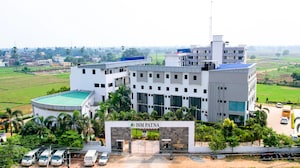A new UGC project will create 22,000 books in Indian languages for higher education
In order to improve higher education, the Ministry of Education and UGC started the ASMITA initiative, which aims to produce 22,000 publications in Indian languages in five years.

To enrich higher education with a robust collection of translated and originally written books in 22 Indian languages, the Ministry of Education and the University Grants Commission (UGC) have launched an ambitious project called ASMITA (Augmenting Study Materials in Indian Languages through Translation and Academic Writing), which will see the development of 22,000 books in Indian languages over the next five years.
ASMITA was started by Sanjay Murthy, Secretary of Higher Education, and is a joint venture between the UGC and the powerful body under the government called Bharatiya Bhasha Samiti.
Through the development of a comprehensive environment for translation and original academic writing, this initiative aims to advance the use of Indian languages in education.
"This project aims to create a robust ecosystem for translation and original book writing in Indian languages across various disciplines within higher education," stated UGC Chairman Jagadesh Kumar, outlining the project's objectives. Within five years, 1,000 novels in 22 languages are to be produced, for a total of 22,000 Bharatiya bhasha books."
SOP AND NODAL UNIVERSITIES
Member universities from diverse locations will be involved in this mammoth endeavor, which thirteen nodal universities will spearhead.
The UGC has created a standard operating procedure (SOP) for the book-writing process in each designated language to guarantee a smooth workflow.
Kumar stated that "This SOP includes the identification of nodal officers, authors, allocation of title, subject and programme, writing and editing, submission of the manuscript, review and plagiarism check, finalisation, designing, proof-reading and e-publication."
SHABDAKOSH BAHUBHASHA LAUNCHED
The Ministry of Education also introduced the "Bahubhasha Shabdakosh," a comprehensive reference tool for terms in all Indian languages and their meanings, in tandem with the ASMITA initiative.
This Shabdakosh, which was created by the Central Institute of Indian Languages (CIIL) in partnership with the Bharatiya Bhasha Samiti, intends to make it easier for people to utilize Bharatiya words, phrases, and sentences in a variety of contemporary contexts, including IT, industry, research, and education.
"This Shabdakosh will help in using Bharatiya words, phrases, and sentences for various new-age domains like IT, industry, research, and education," said the UGC.
By launching these programs, the UGC and the Ministry of Education are advancing the integration of Indian languages into higher education and creating a more vibrant and welcoming learning environment.
Read More
- #UGC NEW COURSES
- # UGC courses 2024
- # UGC 2 new courses
Unlock yourpotential!
Let us know your preference and our team will guide you toward your academic journey. Stay tuned for personalized advice.
FAQ's
The ASMITA (Augmenting Study Materials in Indian Languages through Translation and Academic Writing) project aims to enrich higher education by developing 22,000 books in 22 Indian languages over the next five years.
The ASMITA project was initiated by Sanjay Murthy, Secretary of Higher Education, and is a joint venture between the University Grants Commission (UGC) and Bharatiya Bhasha Samiti.
The ASMITA project will involve member universities from diverse locations, spearheaded by thirteen nodal universities.
The Bahubhasha Shabdakosh is a comprehensive reference tool for terms in all Indian languages and their meanings. Created by the Central Institute of Indian Languages (CIIL) in partnership with Bharatiya Bhasha Samiti
By launching the ASMITA project and Bahubhasha Shabdakosh, the UGC and the Ministry of Education aim to advance the integration of Indian languages into higher education.
Latest News
Photos and Videos





















COMMENTS (0)